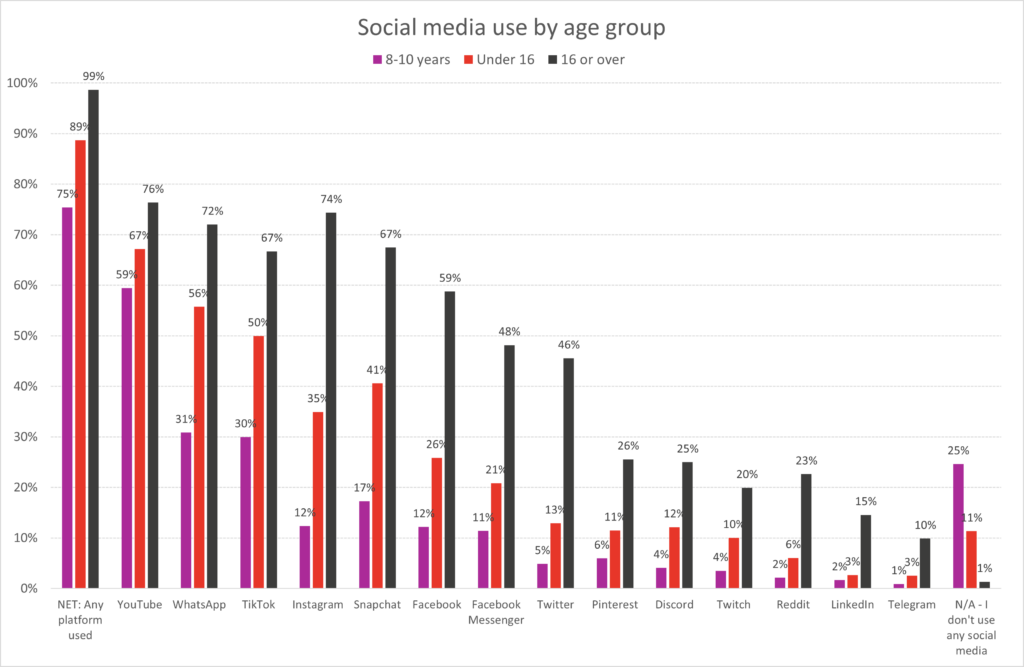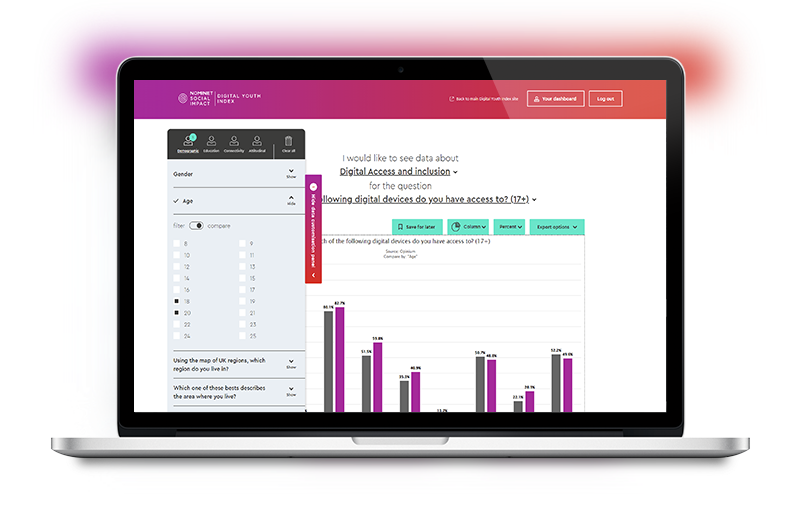One of the things that has struck me during this research, and as the father of two young boys of junior school age, is how dependent we are today on digital technology. It is integral to our daily lives and is second nature to my kids. And as their dad I want to do all I can to help them benefit from digital technology while mitigating the risks of them being harmed.
For example, how do I strike a balance between the time my eldest son spends playing online video games such as Roblox and his time AFK (‘Away from Keyboard’ – my son taught me that)? On one hand I can see that online gaming is important to him. It provides a source of enjoyment and is central to many of his friendships. Gaming has heightened his interest in computers and technology and he and his school friends often meet online for gaming sessions and may even play online when they meet up IRL (‘In Real Life’ – I already knew that one).
So online gaming has its upsides, but every mogwai has the potential to spawn a gremlin (can you guess my age yet?). While he plays with his IRL friends, he also plays with plenty of other people online who are unknown to him and to me. And while I know Roblox has policies, moderation, and reporting mechanism in place to detect and prevent users sharing personal information and using explicit language, messaging tools are integral to many online gaming platforms, and I do not have the time or resources to monitor or block them all. Who is he talking to and what are they saying?
I am more concerned about the social aspects of being online than I am about the time my kids spend gaming. Despite what my mum says, I suspect online gaming will not rot my son’s brain. Quite the opposite. So, I let my son play and I respect his personal space, but I have still got filters on my home network to block adult sites and unsafe content, and that includes a block on social media.
I have no doubt that my son is smart enough that he will find his way around these blocks eventually but for now I find it to be an effective safety net; providing me with some peace of mind by ensuring he has a safer online experience.
However, findings from the Digital Youth Index have made me realise that filtering out social media at home makes me a bit unusual. Perhaps it is because I work for an internet company, so I’m more tuned into conversations and news about online harms and cyber-security, but it turns out that 75% of 8-10 year-olds are on social media in one form or other, as shown here:

Source: Digital Youth Index 2022. Base: n=711 8-19 year olds. Total sample = 4,105
A large portion of this social media use is YouTube, which may not be the first platform that springs to mind when thinking about social media. It is used by 6 out of 10 (59%) children in this age group and I must be honest that I tried to block it once and it went down like a lead balloon. Neither of my sons would forgive me if I blocked them completely from watching Zack Scott and other YouTubers playing video games and unboxing toys, but I draw the line if they start watching MLG Peppa Pig and other disturbing videos. Despite YouTube technically being for teens aged 13 and up, I don’t block it. Instead, I opt to listen out for what they are watching and give them feedback about what is acceptable or not.
What surprises me more about this data is the use of what I would describe as ‘pure play’ social media platforms, such as Facebook, Instagram, and Twitter. The numbers here don’t look too high, at 12%, 12%, and 5%, respectively. However, 18% of the 8–10-year-olds who took part in the Digital Youth Index are on at least one of these three platforms. In UK population terms, that equates to nearly half a million young people. *
After YouTube, TikTok and WhatsApp stand out for having notably higher usage among young children when compared to other social media platforms. I know TikTok has risen to prominence in recent years and is appealing to younger people (explaining why I’m not on it) but it still surprises me that it is used by nearly a third of 8-10 year olds (30%) according to the Digital Youth Index research. The same is true for WhatsApp – 31% of this age group use it – but I find that less surprising because, in my experience WhatsApp has all but replaced text messaging and phone calls to friends and family members. The minimum age for users, according to TikTok’s terms and conditions is 13 years while WhatsApp requires a minimum age of 16 years but relies on the honesty of the child and family to adhere to the age restrictions. Interestingly, Ofcom recently reported that a third of children have a false social media age of 18+.** So, there is clearly no enforcement of social media age limits, but does that really matter? In short, yes. There are good reasons why social media companies put these minimum age requirements in place and the Digital Youth Index illustrates why allowing a child to use social media might not be such a good idea.
Our data in the Nominet Digital Youth Index is clear. It shows that young people (aged 8-25 years) who use social media are three times as likely to be exposed to distressing content while online (67% vs. 23%):

Source: Digital Youth Index 2022. Base: n=238 (Do not use social media), n=3,867 (Use social media)
The Digital Youth Index looks closer at this link between social media use and exposure to distressing content by asking young people if they’ve come across distressing content on each of the platforms that they use. This provides us with a point of comparison between the various platforms rather than treating social media as an amorphous blob:

Source: Digital Youth Index 2022. Base: Min=175 (Tumblr users), Max=2,966 (YouTube users).
What this shows is that not all social media platforms are the same. For example, Twitter and Reddit are the platforms where users are most likely to come across content that they find distressing, while WhatsApp, Pinterest, and LinkedIn, which serve quite different functions, are much less likely to expose users to distressing content.***
I wanted to take a closer look at TikTok because of recent headlines about its failure to protect children. * As mentioned, it has a younger user base than some of the other platforms, being used by around a third of 8–10-year-olds. We can also see that it ranks in third place after Twitter and Reddit, making it a likely source of distressing content. Exactly two-thirds (66%) of TikTok users told us that they have experienced distressing content on the platform at least once, and more than 1 in 5 (22%) of our young respondents said that they see distressing content on the platform often. Let’s have a closer look at 8–10-year-olds compared to respondents aged 16-25-year-olds:

Source: Digital Youth Index 2022. Base: 8–10-year-olds, n=536 (social media users), n=175 (non-users), 16 years or over, n=2,244 (social media users), n=30 (non-users) *
For me, there is a clear takeaway from this chart. The older you are, the more likely you are to have experienced distressing content online. That’s not surprising. It’s not even surprising that you’re more likely to be exposed to distressing content if you use social media. That’s the law of probability. What surprises me, is the extent to which children who are much younger than the minimum age limit recommended by most social media platforms, are using social media and this means that they are nearly doubling their chance (53% vs. 30%) of being exposed to content that could lead to distress. For now at least, I’m going to keep my household social media filter in place.
*** [Footnote] As an aside, in light of the Molly Russell inquest I took a closer look at Pinterest. While the DYI analysis shows it to be one of the safer social media platforms, it also shows that Pinterest users are more likely to be female than male (70:30). This is high compared to the other platforms, which tend to have a split closer to 50:50. Unfortunately, the data also shows that women and girls are more likely to report having experienced distressing content online than men and boys – and this holds true across all the categories of distressing content we listed – so if they don’t experience it on Pinterest, they are still more likely to be exposed to it elsewhere.

Tom Baynton, Market Analyst at Nominet
Tom is a Market Analyst at Nominet, having joined the organisation in 2014 from the research agency Kantar TNS. He supports the UK registry and Social Impact teams by conducting research and analysing market and registry data. He has worked on the Digital Youth Index since its inception in 2021, with a specific focus on co-development of the DYI data tool.
Share this article












